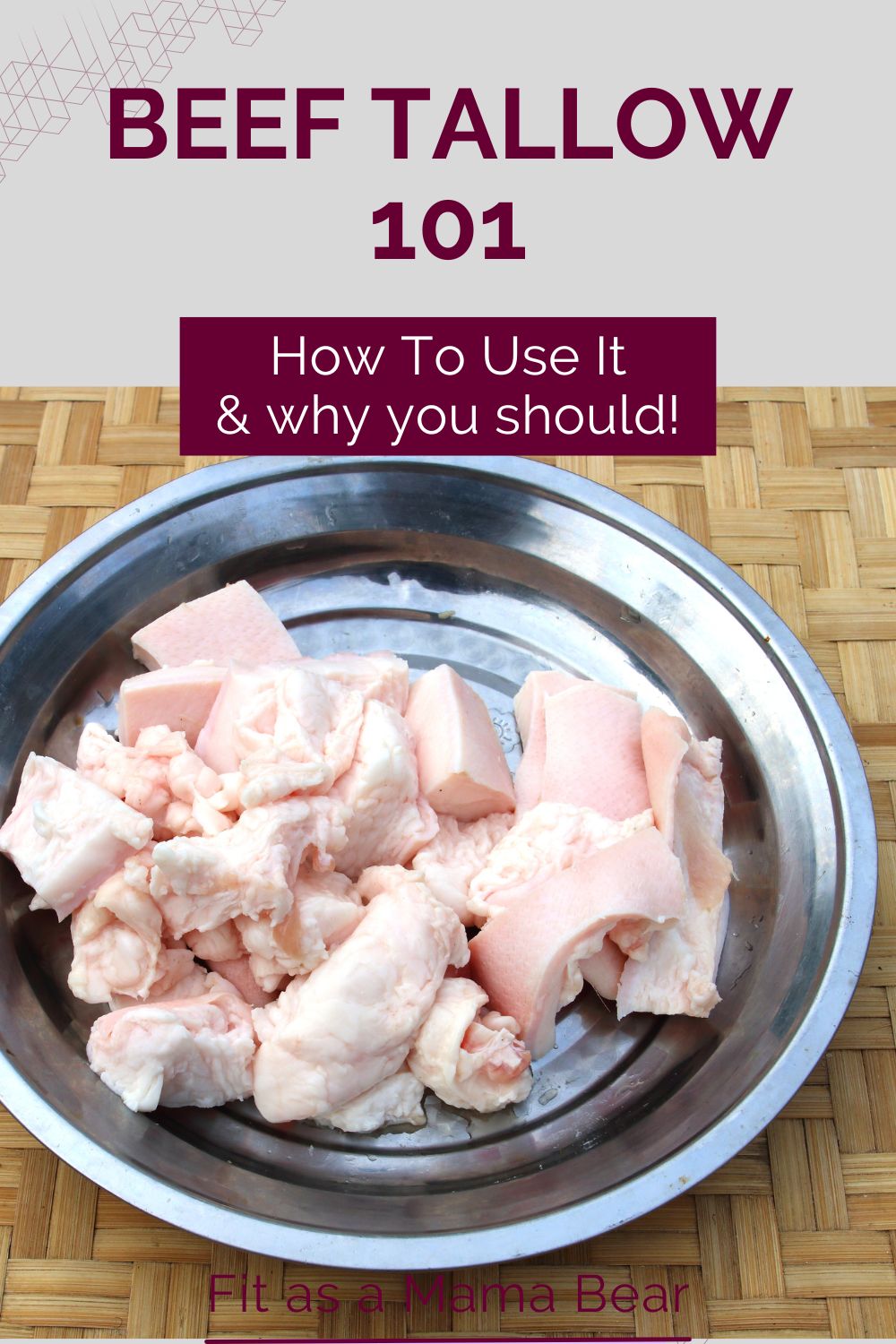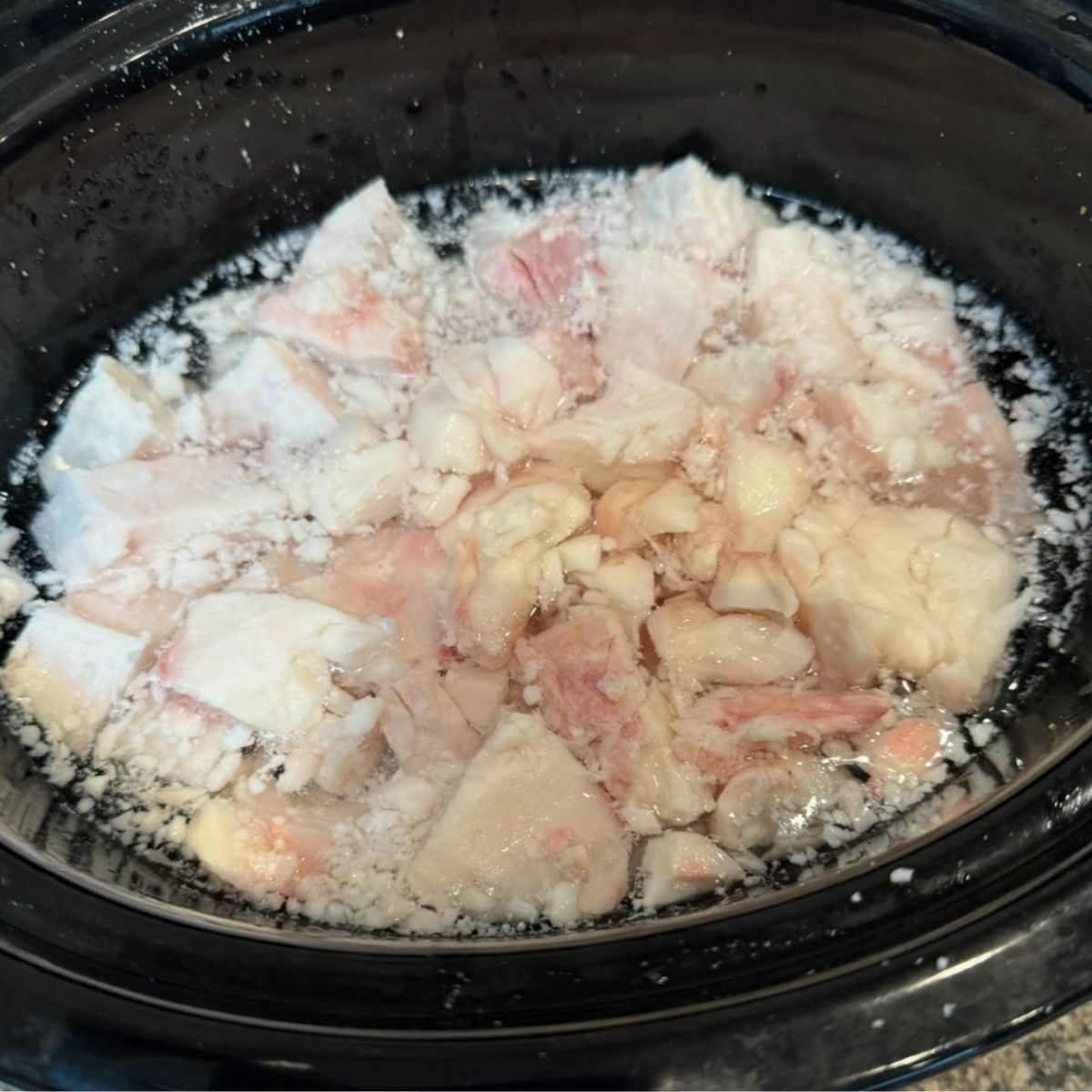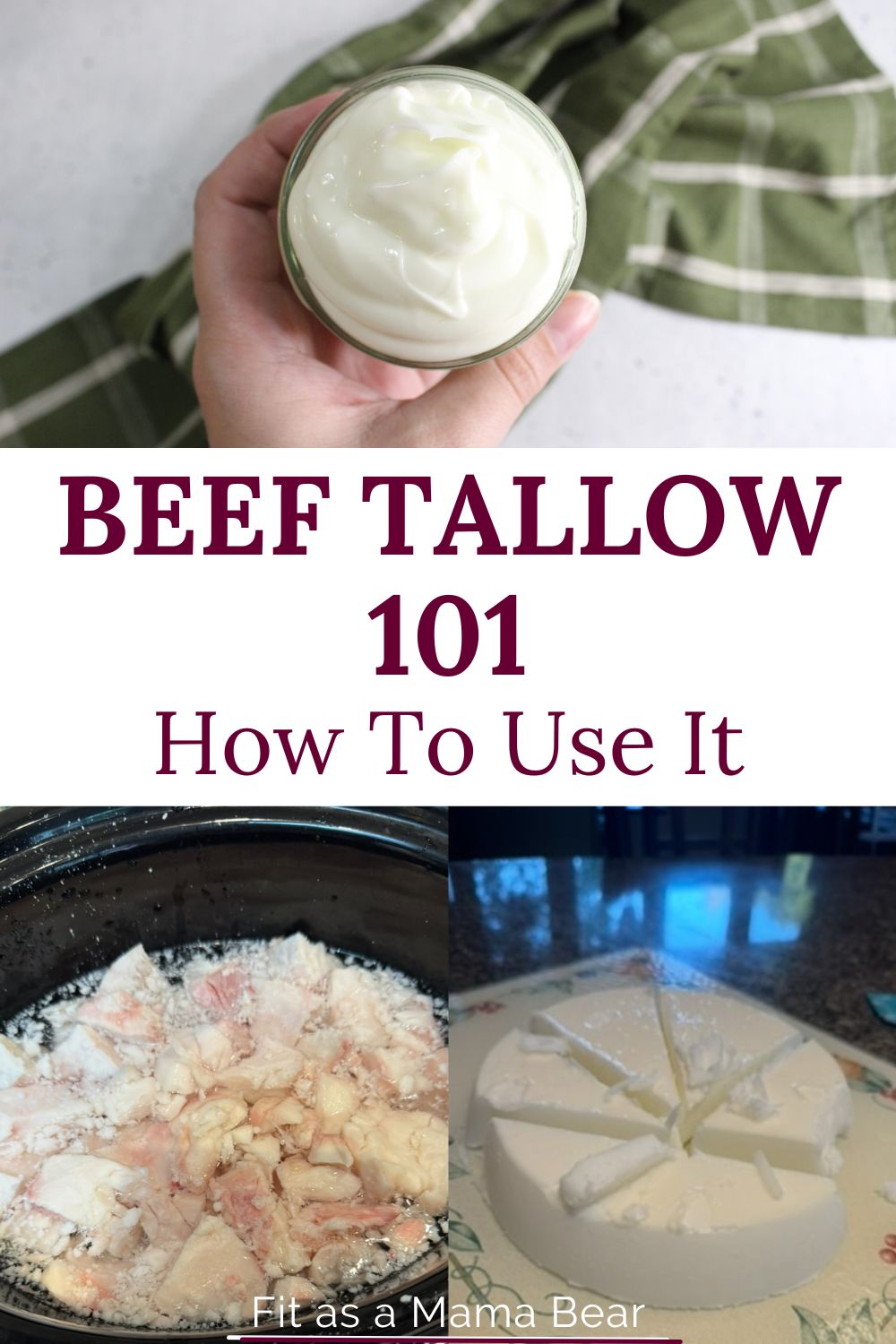As one of the best fats for both your tummy and your skin, beef tallow is a great addition to your cupboard. Learn more about what tallow is, along with its benefits and how to use it in both your culinary and skincare needs.

What Is Beef Tallow?
Simply put, beef tallow is rendered beef fat, and it’s making a big comeback. Once a staple in kitchens and homes for everything from cooking to skincare, beef tallow is now loved for its versatility, natural benefits, and nostalgic nod to traditional living.
If you love knowing exactly what goes into your food and products, tallow might just become your new favorite. Think of tallow as the ultimate multitasker. It’s a fantastic high-heat cooking fat (it’s actually what I use as a dairy-free swap for butter), a natural skin moisturizer, and even a key ingredient for DIY projects like homemade candles and balms. Plus, with its long shelf life and nutrient-dense profile, beef tallow has a lot to offer, whether you’re frying up crispy vegetables or crafting a handmade soap.
Why beef tallow deserves a spot in your kitchen
Beef tallow stands out for its high smoke point of around 400°F, which makes it perfect for frying, roasting, and sautéing. Unlike many industrial oils, it doesn’t break down as easily under heat, meaning you get a crispy, golden texture without the smoky mess. It also lends a subtle, savory flavor that enhances anything from roasted potatoes to pie crusts. I use it the most for everyday cooking from things like dairy-free scrambled eggs to teriyaki steak bites.
It’s an excellent alternative to modern vegetable oils without artificial additives. Plus, making it yourself — it’s just beef fat, rendered and strained — is simple, satisfying, and cost-effective.
Plus, it allows for a lot of versatility in your kitchen as it brings in a savory, rich flavor that’s actually healthy for you.
How To Use Beef Tallow
Below are my favorite ways as a natural mama to use beef tallow in the house.
Roasting vegetables
Toss root vegetables like carrots, sweet potatoes or Brussels sprouts in melted tallow before roasting for a crispy exterior and rich, caramelized flavor. It’s a simple way to make everyday vegetables taste gourmet. We use it in place of oil a lot in our roasted root vegetables recipe.
Frying and sauteing
Tallow’s high smoke point — around 400 F — means it holds up well under high heat. Whether you’re frying crispy vegetables or searing meat, tallow ensures consistent results without breaking down like many oils. Think golden French fries or perfectly crispy fried chicken.

Baking applications
Tallow can also be used in baked goods like biscuits or pie crusts, providing a flaky texture similar to butter or shortening. It’s a fantastic option for savory pastries or breads that call for a rich and hearty base.
Flavor enhancer
A dollop of beef tallow stirred into soups, stews, or sauces deepens the flavor, adding an extra layer of richness that other fats can’t replicate. It’s the secret ingredient that takes comfort foods to the next level.
Lotions and body butter
Tallow's rich, natural texture makes it ideal for crafting homemade skincare products. For instance, it’s a game-changer in recipes like DIY face cream and whipped tallow body balm, which mimics the skin’s natural oils and provides deep hydration without clogging pores.

Soap making
Tallow has long been prized for its ability to create firm, long-lasting bars of soap that lather beautifully. Try it in this homemade bar soap to create a practical and nourishing product. Unlike synthetic soap bases, tallow-based soaps are gentle on the skin and environmentally friendly.
Candles and beyond
Tallow is also a key ingredient in DIY candles. Its high melting point and slow burn time make it an excellent choice for crafting candles that last longer and burn cleanly. It’s a biodegradable, sustainable option that fits well with eco-conscious lifestyles.
How to make beef tallow at home
Making beef tallow at home is surprisingly simple and allows you to control the quality. All you need is fresh beef fat, a fine mesh strainer and some jars for storage. The process involves slowly rendering the fat, straining out impurities and letting it cool to solidify. Check out this article on how to make beef tallow for a detailed recipe and guide.
Once you’ve made your tallow, you’ll find endless uses for it. Whether you’re frying up crispy vegetables, crafting handmade skincare products or seasoning your cast-iron skillet, homemade tallow is a versatile and cost-effective option.

Why skip store-bought tallow?
Store-bought tallow often contains additives or preservatives to extend its shelf life. When you make your own, you know exactly what’s in it — pure, rendered beef fat, just as it should be. It’s also an excellent way to reduce waste if you have leftover beef trimmings.
Homemade tallow can be stored in the refrigerator or freezer for months, making it a practical staple to keep on hand. Plus, the satisfaction of making it yourself is worth the effort.
Tips for storing and using beef tallow
Beef tallow is incredibly shelf-stable, especially when stored in a cool, dry place. If you keep it in an airtight jar, it can last for up to a month at room temperature or several months in the fridge. For longer storage, freeze it in small portions for up to three months.
When refrigerated, tallow solidifies into a soft, spreadable texture, much like coconut oil. This makes it easy to scoop out and use as needed. Whether you’re cooking with it or using it for non-culinary purposes, tallow’s versatility is unmatched.

Final thoughts
Beef tallow isn’t just a throwback to traditional cooking — it’s a versatile and sustainable ingredient that fits seamlessly into modern life. Whether you’re frying up your favorite comfort foods, making a nourishing body balm or crafting homemade soap, beef tallow offers endless possibilities.
Rediscover the art of using beef tallow and enjoy the benefits of this timeless, all-natural product. It’s simple, practical, and a wonderful way to add value to your everyday routines.
Disclaimer: These statements have not been evaluated by the Food and Drug Administration. The contents of this article, made available via Food Drink Life, are for informational purposes only and do not constitute medical advice. The Content presented here is not intended to be a substitute for professional medical advice, diagnosis, or treatment. Always seek the advice of a qualified healthcare provider with any questions you may have regarding a medical condition or dietary changes. Reliance on any information provided by this article is solely at your own risk.
This article originally appeared on Food Drink Life.





Leave a Reply